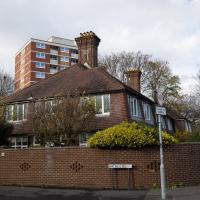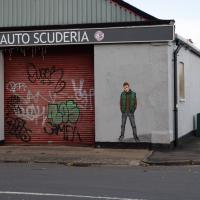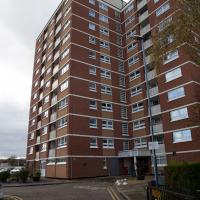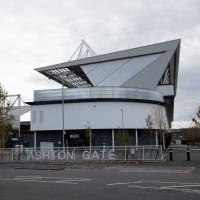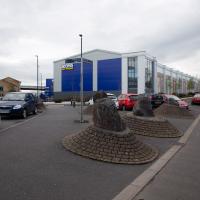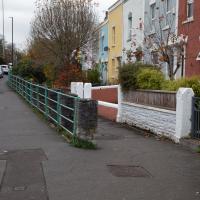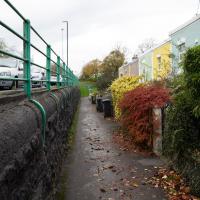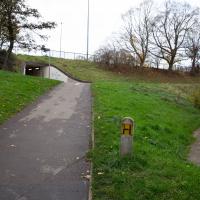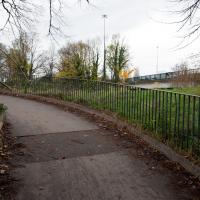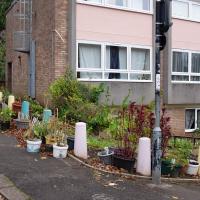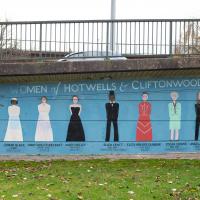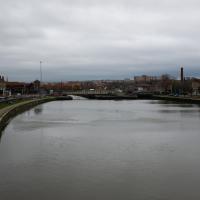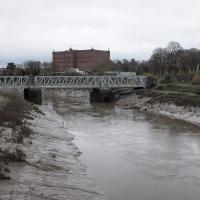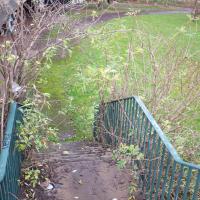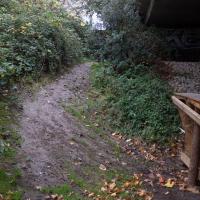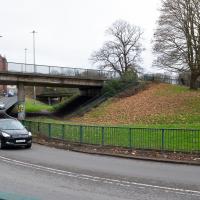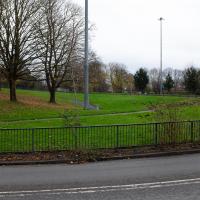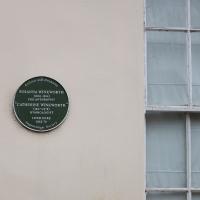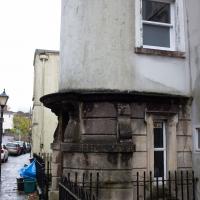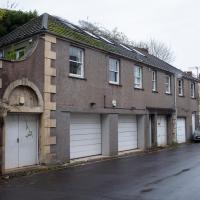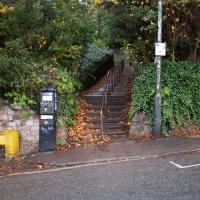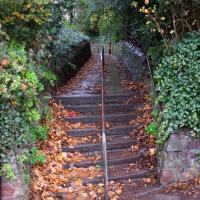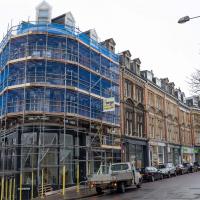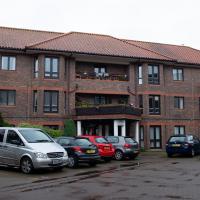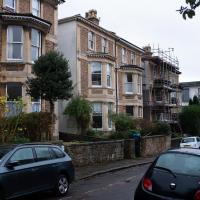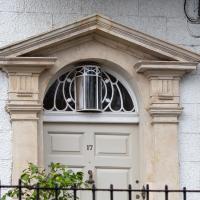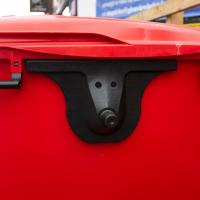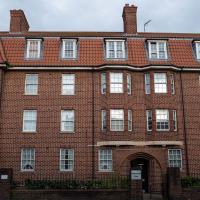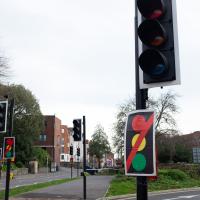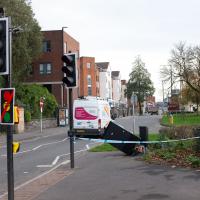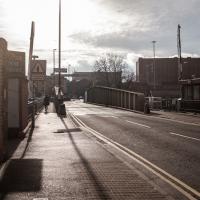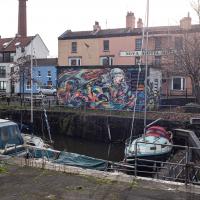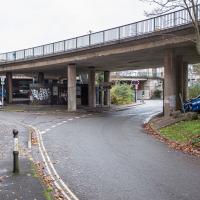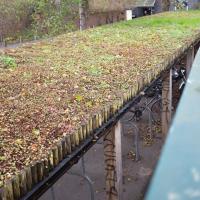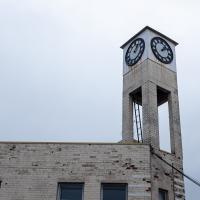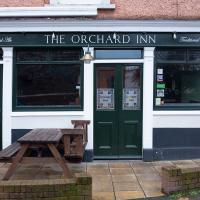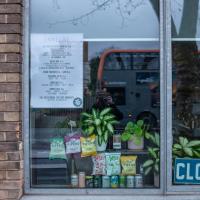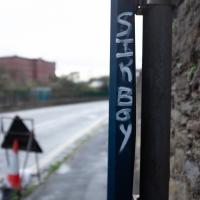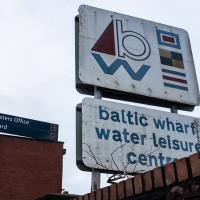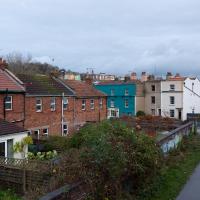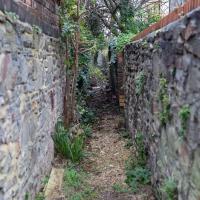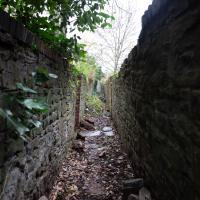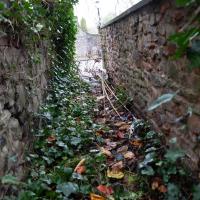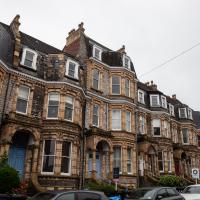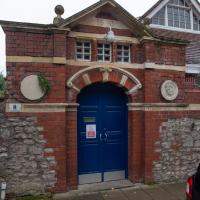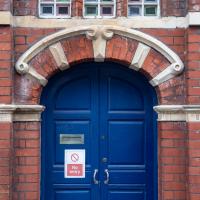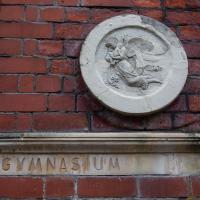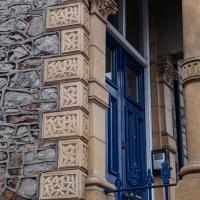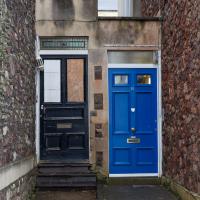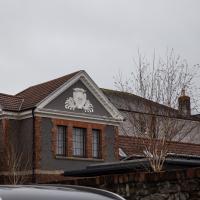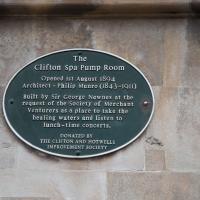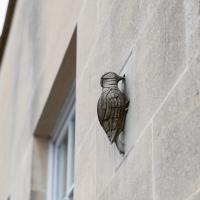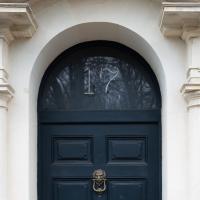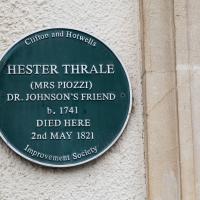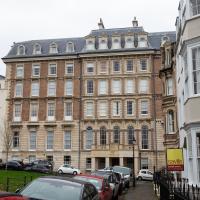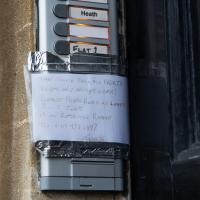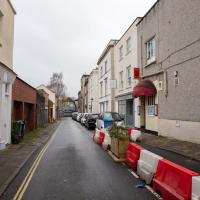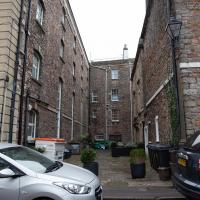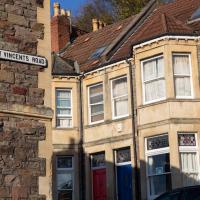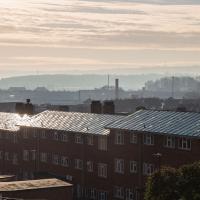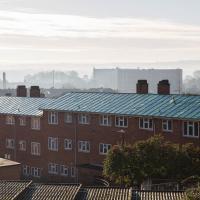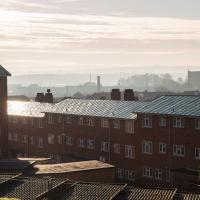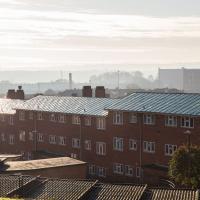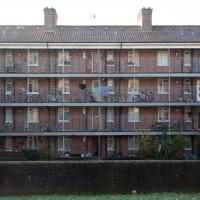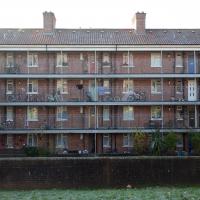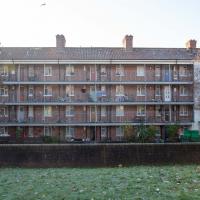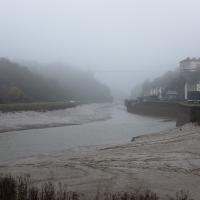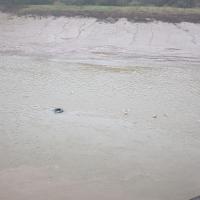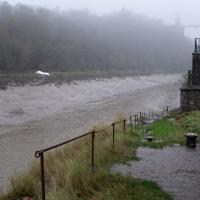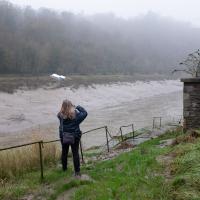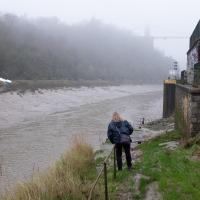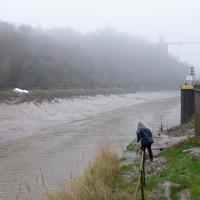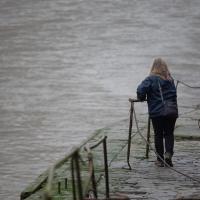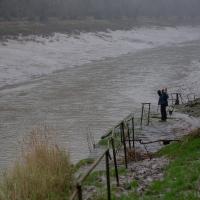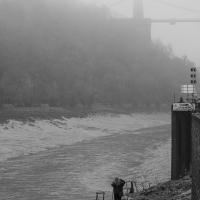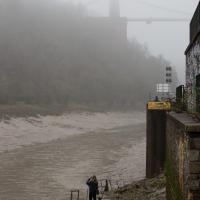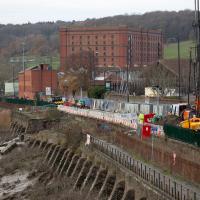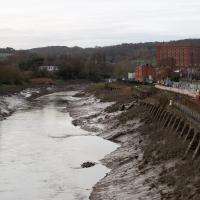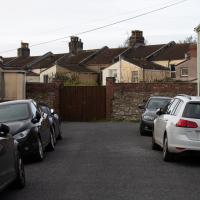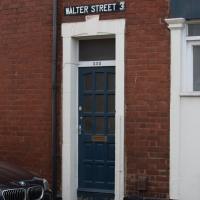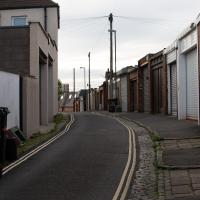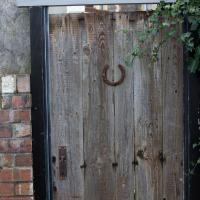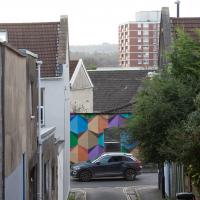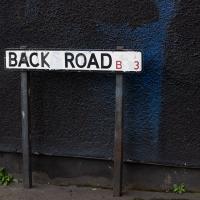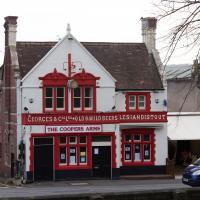Tagged: bristol
Sunday Afternoon
15 Nov 2020
A walk back from Bedminster to my place, mostly down Duckmoor Road, which I found a little dull—probably because it reminded me a little of the suburbs I grew up in on the outskirts of London—then held up slightly by some filming on Ashton Avenue Bridge. They were trying not to let the crowds build up too much in between takes, it seems, so it wasn't a long delay.
In which our intrepid hero levels up.
Quite a line-up. I'm afraid to say I've only read the obvious writer here; I've just popped Angela Carter's The Bloody Chamber on my "to-read" list to try and make up for that, but it's quite a long list right now.
I keep on thinking there might be a quick way to Greville Smyth from here, but I think the only shortcut is up that muddy slope to the staircase on the left. And it's quite steep and very slippery-looking, so I've never tried it.
The other way to get to Greville Smyth more quickly from there would be to go up that set of steps, but it would mean vaulting the railings, and I don't really do vaulting.
Clifton Village Mini Wander
20 Nov 2020
Just a quick wander up the hill to get a flat white from Twelve. I really enjoyed the spooky mannequin (?) in the window.
The one nearest is an AirB&B-style rental and looks lovely inside. This is the kind of quirkiness I might aspire to.
Many a time have I wandered down this little cut-through that joins Saville Place and the Fosseway. A shortcut through the Polygon starts me off, then it's pretty much a straight line up through to here and on to Queen's Road.
A little retirement housing block sitting at the end of a private road at the end of the Fossway. I've never wandered up and seen it before, though I've walked past it a thousand times.
I'm not sure what's going on in this fanlight on Richmond Terrace. Maybe it's space for a lamp?
I have no idea how anyone managed to smack this street furniture so hard, or what direction they came from to do it. It's a pretty straight 30mph road right there, and this is only one side of the dual carriageway. Never seen so much as a near-miss there.
That a BMW came a tad too fast out of Clifton Vale, lost it completely and trashed the main control box for the traffic lights. It took them quite some time to fix it. I'd imagine his insurance company is getting quite the bill...
Underpass
25 Nov 2020
A quick lunchtime jaunt for coffee. I've often wondered about the dots on the wall of the underpass. Apparently they're not intelligible Braille. Maybe it's Marain :D
Given that it's on an unwalled bike shed, I doubt it's there for insulation. The CREATE centre my just have it there as an example of what an eco-friendly roof can look like, though.
One of the other sides of this clock is very broken. At least these two show the same time, even if they're wrong. By my calculation, this broken clock is right six times per day.
Must be going through some hard times at the moment. I've been in a few times since I used to live at Baltic Wharf in the mid-nineties, and it's always been a slightly edgy-but-nice local pub that's reasonably welcoming of strangers, too. Plus it's a well-worn stop off for people on the way home from the footy.
At least someone's still watering the plethrora of plants that are arranged in Spike Island cafe's windows.
I don't think I ever crossed this bridge on foot before starting my "One Mile Matt" project.
And Back Down the Hill from the Flu Jab
21 Nov 2020
This is my return from getting my annual flu jab at Christ Church, as explained in more detail in my wander up the hill.
I don't think this is exactly a public right of way. But I started so I tried to finish without getting the police called on me by worried residents
I do love this terrace. The mansard roofs, the grand central house, the ornamentation, the porches. It's all rather grand.
This is now the Bristol School of Dancing. Their website says:
Built in 1893, it stands in the garden of 20 Vyvyan Terrace and it is rumoured that it was once a Swedish diplomatic building that contained a gymnasium. This is probably why on either side of the main entrance the words “Swedish Gymnasium” are carved.
Don't know what the JMJ is all about. Seems to be part of Cedar Care Homes (this is all behind their grand head office on Clifton Down Road, Mortimer House), but it's hard to tell for sure.
Up for the flu jab
21 Nov 2020
A trip up the hill to get my winter flu jab. I'm not sure I really needed it this year, what with avoiding Covid—I haven't had so much as a sniffle in more than a year—but seeing as they offered... Instead of the doctor's surgery on Pembroke Road, they'd taken over Christ Church, presumably to give more room and ventilation for the necessary social distancing at the moment. As usual, it was their typically efficient operation, and I was in and out in about three minutes.
On the way there and back I snapped as much as I could, but I wanted to be home in time for the first online Times Crossword Championship. As it turned out, I needn't have bothered, as the technology at the Times couldn't keep up with the demand from competitors, and their system just collapsed under the weight of page-views. They tried again the day after, and it collapsed just as badly. Maybe next year...
This wander is split into two parts, as I turned my tech off to go into Christ Church for my jab. The walk home can be found over here.
This was meant to be the day of the first online Times Cryptic Crossword Championship. Sadly the Times's web servers let them down, so the event was a washout, and I dashed back from my flu jab to take part for no good reason, as it turned out.
Although it looks like the side of the kind of flats you see everywhere in Clifton Village, the building to the left is actually the Christchurch Recording Studios. Among other artists who've used the studios, two of Massive Attack's number one albums were recorded here, according to this article that sadly but inevitably seems to suggest that the building might be converted into luxury flats soon.
It was originally fitted out as a drama and recording studio by the BBC in the 1980s.
Avoiding the Accounts
26 Nov 2020
I took the day off my day job to do my accounts—or at least do enough bookkeeping to send them to my accountant. I hate doing the books. I woke up late, tired and with a headache and decided to bunk off for a walk around Cliftonwood, Clifton Village and Clifton instead, taking in a couple of good coffees along the way. Thanks, Foliage Café, and Twelve for the flat whites.
From what I've worked out so far, the use of St Vincent's name around so much of Bristol, especially Hotwells and Clifton, dervies from the ancient hermitage and chapel dedicated to St Vincent of Saragossa, which (possibly) was in Ghyston’s Cave, the cave in the rock face now accessible through a tunnel from the observatory, but at the time only by a perilous cliff climb (which I can only presume is what made it so appropriate for a hermitage.)
Why St Vincent of Saragossa? Anthony Adolph says:
It should be explained that the connection of Bristol with the Iberian wine trade led, in the Middle Ages, to Bristol’s importing of the cult of Lisbon’s patron saint, Vincent.
I have done very little real research on this so far, though, so don't take my word for any of it. I am not a historian, etc.
A long ramble, starting with trying to find the Hot Well of Hotwells and leading up the side of the Avon Gorge to the Downs and then through Clifton for coffee.
Vik and I often just stand back calling helpful advice like "please don't die!" when Sarah's off getting a picture from some liminal space or other.
Fruitless Coffee Excursion
01 Dec 2020
Unfortunately by the time I got to Greville Smyth Park I was already about halfway through my lunch-hour, and the queue was too long to wait to actually get a coffee. Is that a fruitless excursion? Presumably a coffee bean is technically a fruit...
This kind of vague musing was sadly overshadowed by my delay at Ashton Avenue Bridge on the way back, where someone—hopefully still a someone, rather than a body—was being stretchered up the bank of the river, presumably having just been rescued from the water. As I made my way home the long way around, avoiding the cordoned-off area at the back of the CREATE centre and its car park, I saw an ambulance haring across the Plimsoll Bridge, siren running, presumably on its way to the BRI. I'd like to think that was a good sign.
